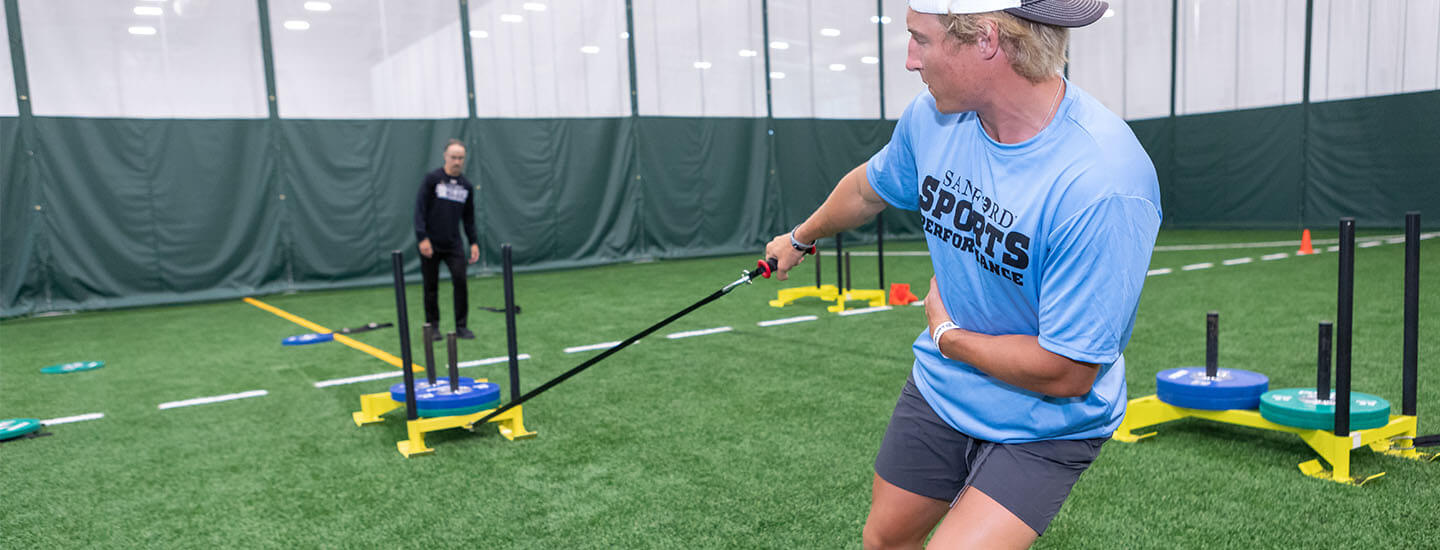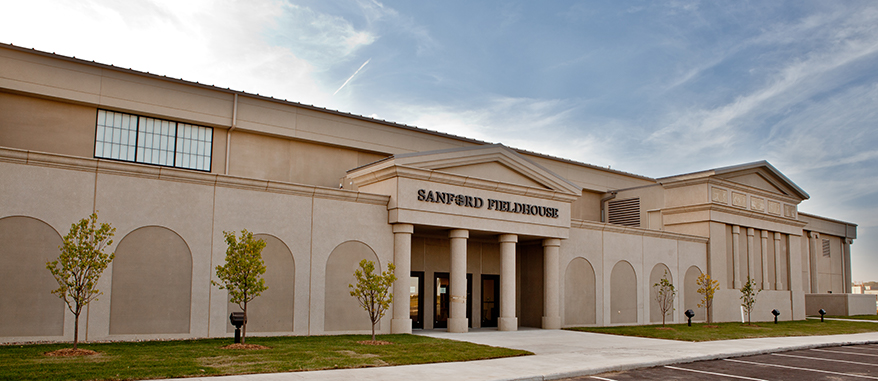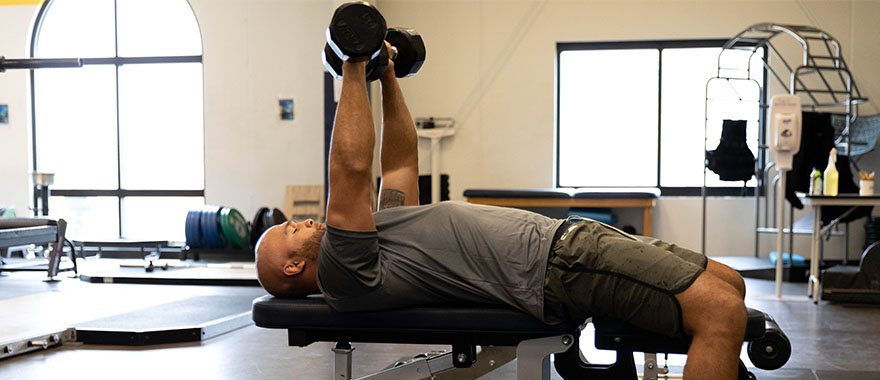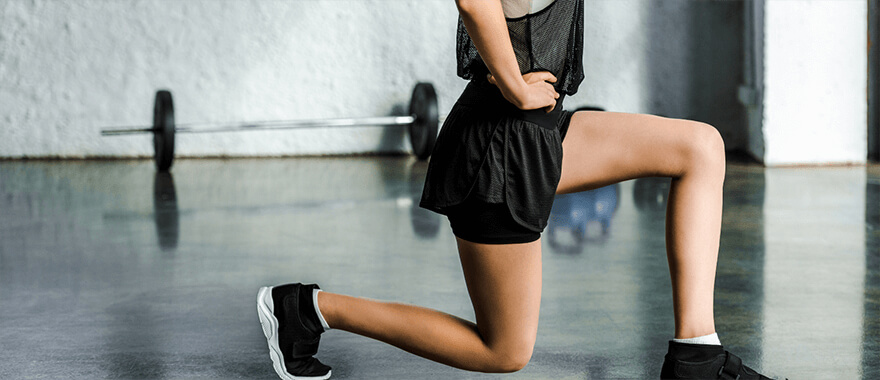Performance training helps athletes hyperfocus

Posted: September 8, 2025
Performance training is more structured than working out. You’re not just trying to break a sweat, you have more specific goals – like improving your marathon time or increasing your strength.
“Performance training is where you have a desired outcome,” Michael Silbernagel, the manager of Sanford Sports Performance in Bismarck, said. “It can be athletic related, and it could be non-athletic related, but you are looking to achieve something specific within the training regime or program.”
General training could be about getting your heart rate up, getting a good sweat in, and can even be inconsistent, with the number of sessions varying from week to week with no specific long-term goal in mind.
“General training is like watching Seinfeld,” Silbernagel said. “You can miss an episode and still laugh not knowing what happened before or after.”
But performance training follows a stricter schedule.
“Performance training is more like Game of Thrones,” Silbernagel said. “If you miss an episode, you’re trying to figure out what you missed. There is a way the show is navigating you through the season from start to finish. You are building toward this really awesome storyline and an awesome outcome.”
Getting started
Performance training isn’t just for elite athletes, it can be for everyone.
The first step in getting started with performance training is figuring out what you want to accomplish. What’s the end game? Once the goal is set, the hard work can begin.
“We start with a screening,” Silbernagel said. “We want to see what your power output is. We may want to see what your vertical or broad jump numbers are. The first workout or two we may be looking at how you move. Your height and weight metrics might come into play.”
Each program is customizable, they are fit to meet the goals that the individual has in mind if someone wants faster mile times during a marathon, their training program won’t have an emphasis on upper body hypertrophy. Their program is going to be designed to help build up their leg muscles and endurance.
“I don’t want to train a marathon runner like a powerlifter because having extra upper body strength might look good in your tank top while you’re running, but it makes it harder to perform at higher speeds,” Silbernagel said. “Instead we can make your legs stronger and increase your muscular endurance.”
Managing injuries
Injuries happen. Unlike video games, we are unable to turn injuries off and that’s the reality that comes with competition. Performance training can help prevent injuries by training parts of the body that are weaker and identifying potential overuse injuries.
“Your body is like a vehicle,” Silbernagel said. “If you are always turning left and you never turn right, you are eventually going to have wear patterns. The same is true with your body and your specific sports.”
Performance training incorporates targeted exercises that help guard against overuse injuries by limiting the wear and tear on certain muscles.
“There is a navigation piece to it,” Silbernagel said. “To me, it’s looking at whatever the sport is and trying to work on the opposite sometimes. If they’re a swimmer, I know they do a lot of internal rotation, so they don’t need a lot of bench pressing in their workouts. They may need to do more back work or vertical or horizontal pulls. We want to make sure they are staying strong where they are strong, but we will also attack the points of the body that are weaker.”
Sanford Sports Performance
At Sanford Sports Performance, you will get to work with a group of experienced coaches who will give you personalized recommendations that will help you accomplish your wellness goals. Whether it’s speed and agility training or building muscle mass, our performance experts will help you reach your goals.





